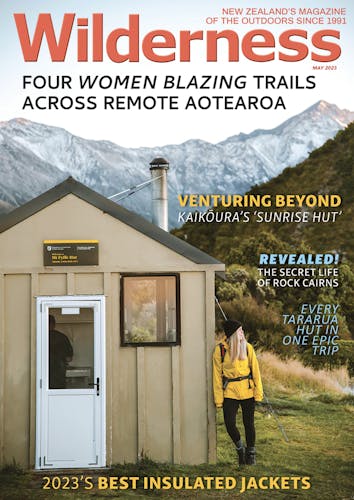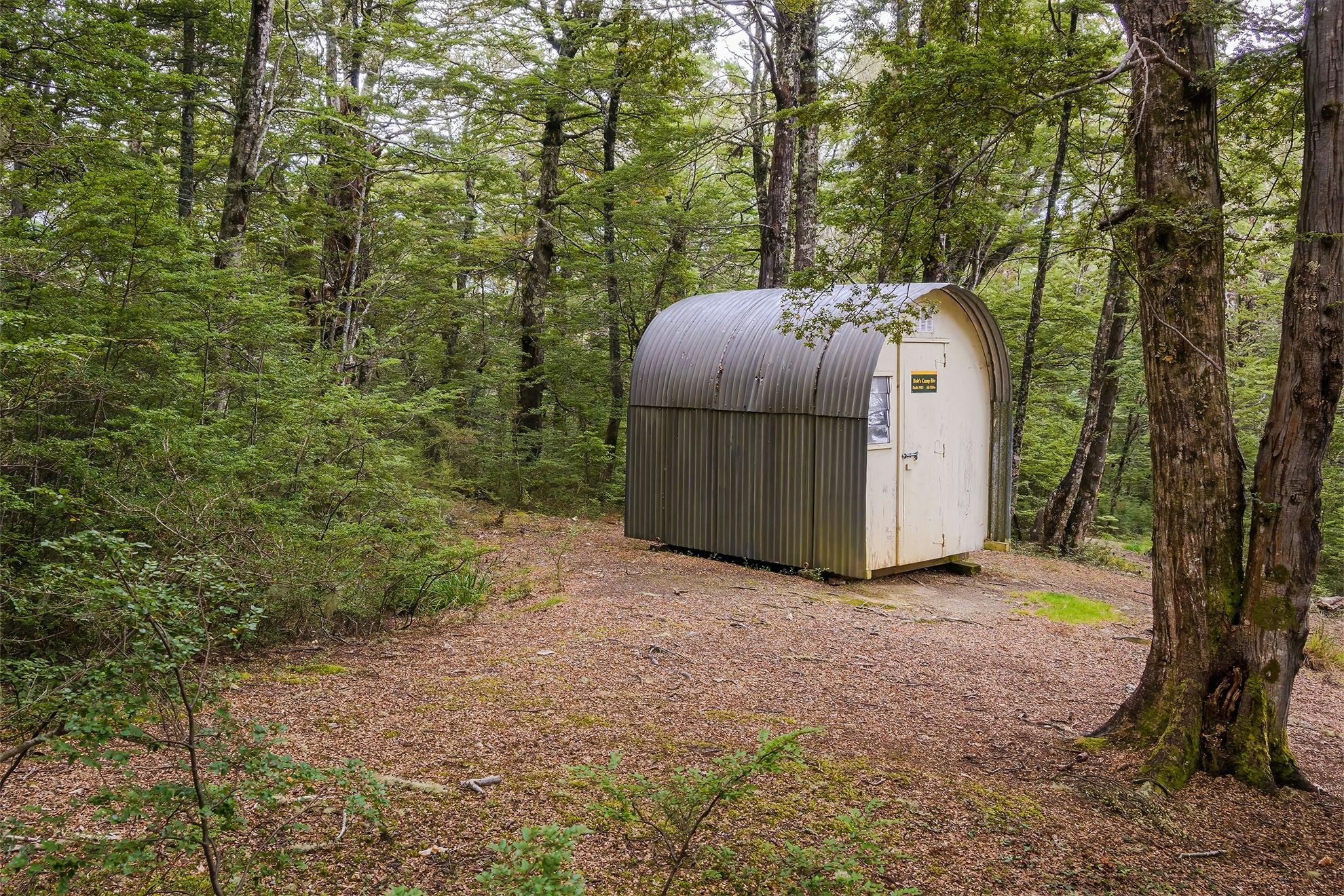Six places to see these curved roof hut designs.
During the First World War, the British Army developed a style of hut known as the Nissen. The simple design used curved corrugated iron for the roof and walls (think of a typical New Zealand barn). Designed by a British-Canadian engineer, Major Peter Nissen, they proved to be both inexpensive and remarkably quick to build. (According to Wikipedia, the record was under 90 minutes).
Nissen huts continued to be used extensively during the Second World War and were afterwards adapted for a range of uses around the world.
Parts of Aotearoa’s backcountry have bivouacs with curved roofs, although the similarity to a proper Nissen Hut is superficial rather than direct. The former New Zealand Forest Service built the stand-up, two-bunk design during the 1970s and 80s in parts of southern Marlborough and northern Canterbury. We can view them as a regional style of hut.
The greatest concentration of these curved roof bivs (at least five) is in Ka Whata Tū o Rakihouia Conservation Park. The park spans much of the Seaward Kaikōura Range, with the Waiau Toa/Clarence River on its northern boundary. Mountain-bike, horse or 4WD access is possible on a vehicle track beginning from Kahutara, off SH70, southwest of Kaikōura (contact Muzzle Station for permission. It is closed in winter). Alternatively, some of these bivs (Palmer, Haycocks and Fidgit) can be visited as side-trips by parties rafting the Clarence River.
Some curved-roof bivs have disappeared; notably Barretts Biv in Hāpuku Valley, which was buried under millions of tons of rock during the 2016 Kaikōura Earthquake.
Here are six to visit.
1 Kahutara Biv
Ka Whata Tū o Rakihouia Conservation Park
The remote Kahutara Biv lies in the headwaters of the Kahutara, a long and twisting river that drains the southern flanks of the Seaward Kaikōura Range. From the 4WD vehicle track, off-track tramping leads down a spur to the two-bunk biv. It’s a route suitable only for the determined and which needs good navigation skills.
2 Haycocks Biv
Ka Whata Tū o RakihouiaConservation Park
At the northern end of the Seaward Kaikōura Range is this remote and difficult to access biv, which some years doesn’t get any visitors. It lies in a tributary of Snowgrass Stream, itself a tributary of the Waiau Toa/Clarence River. Reaching it requires challenging tramping in the George and Jam streams, through country ravaged by the Kaikōura earthquake, and often through thickets of spiky plants.
3 Fidgit Biv
Ka Whata Tū o Rakihouia Conservation Park
The curiously spelt Fidgit Biv (two bunks) lies in the headwaters of Fidget Stream, a significant tributary of the Waiau Toa/Clarence River. From Stony Flat, located at the end of the vehicle track along the Clarence, the biv can be reached in a few hours.
4 Palmer Biv
Ka Whata Tū o Rakihouia Conservation Park
Palmer Stream is another tributary of the Waiau Toa/Clarence River. Palmer Hut lies beside the Clarence, at the end of the 4WD vehicle track from where it is a straightforward tramp up the riverbed to the two-bunk Palmer Biv.
5 Bob’s Camp Biv
Mt Thomas Forest Conservation Area
The two-bunk Bob’s Camp Biv lies nestled in the beech forest in the Mt Thomas Forest, near Rangiora.
A satisfying overnight tramp begins from the Woodend Gully Camping Area, follows the Woodend Gully Track onto the tops and along the ridge to Bob’s Camp Biv. The night can be spent here or you can tramp along the poled route across Cattle Peak down to Pinchgut Hut. From there, the Whare Route Track climbs back onto the tops, ending with a descent down Woodend Gully.
6 Lower Salmon Creek Biv
Oxford Forest Conservation Area
This two-bunk biv occupies a terrace beside Salmon Creek, a tributary of the Waimakariri River. It’s reached from the Wharfedale Track, a popular benched trail accessible from near Oxford. From the Wharfedale Track, use either Fosters Ridge Track or Black Hill Track, passing Black Hill Hut en route from where it’s two hours to Salmon Creek Biv. Allow one long day each way, or more days (with a stay at either Wharfedale or Black Hill huts) if you prefer to take more time.








